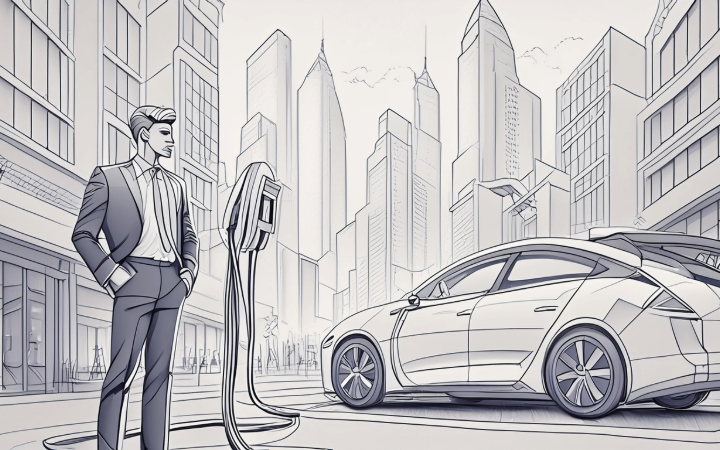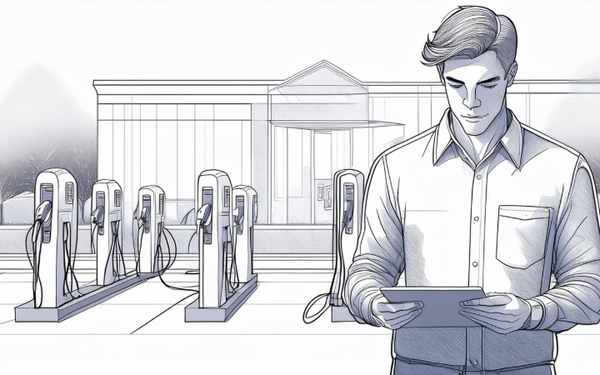The Business Model for Becoming an Electric Vehicle Charge Point Operator
This article delves into the business model of becoming an EV charge point operator, exploring the key components, revenue streams, challenges, and opportunities in this burgeoning industry.

Introduction
The electric vehicle (EV) market is rapidly expanding, driven by environmental concerns, government incentives, and advances in technology. With this growth comes an increasing demand for EV charging infrastructure. Charge point operators (CPOs) play a critical role in this ecosystem, offering the necessary infrastructure to support the widespread adoption of EVs. This article delves into the business model of becoming an EV charge point operator, exploring the key components, revenue streams, challenges, and opportunities in this burgeoning industry.
Key Components of the Business Model
- Infrastructure Investment:
- Hardware: The initial investment for a CPO involves the purchase and installation of charging stations. These range from slow chargers (Level 1) to fast chargers (Level 2 and DC fast chargers). The costs vary significantly, with Level 1 chargers costing a few hundred dollars and DC fast chargers running into tens of thousands of dollars.
- Software: Effective operation requires robust software for managing the charging network, monitoring usage, handling payments, and providing customer support. This often involves significant upfront and ongoing costs for development and maintenance.
- Location and Deployment:
- Site Selection: Strategic placement of charging stations is crucial. High-traffic areas such as shopping malls, office complexes, and highways are prime locations. Partnerships with property owners or leasing agreements are common strategies to secure these sites.
- Installation: Installation costs include electrical work, site preparation, and permitting. The complexity and cost can vary based on the site’s existing infrastructure.
- Operations and Maintenance:
- Maintenance: Regular maintenance ensures the reliability and longevity of the charging stations. This includes both routine checks and repairs. CPOs may have in-house teams or outsource these services.
- Customer Service: Providing 24/7 customer support to address issues and assist users is vital for customer satisfaction and retention.
Revenue Streams
- Charging Fees:
- Usage Fees: CPOs typically charge users based on the amount of electricity consumed (per kWh) or the time spent charging. Pricing models can vary, with some CPOs offering subscription plans or membership discounts.
- Idle Fees: To maximize the utilization of charging stations, some CPOs impose fees for vehicles that remain plugged in after charging is complete.
- Grants and Incentives:
- Government Grants: Many governments offer grants and incentives to promote the installation of EV charging infrastructure. These can significantly offset the initial investment costs.
- Tax Credits: Tax incentives can further reduce the financial burden on CPOs, improving the return on investment.
- Advertising and Partnerships:
- Advertising: Charging stations in high-traffic areas offer advertising opportunities. Screens on charging units or nearby signage can generate additional revenue.
- Partnerships: Collaborations with businesses can include revenue-sharing agreements. For instance, a CPO might partner with a retail chain to provide charging stations at store locations, drawing in customers and sharing the revenue generated from charging fees.
- Data Monetization:
- User Data: The data collected from charging sessions, such as usage patterns and customer preferences, can be valuable. This data can be anonymized and sold to third parties or used to optimize operations and marketing strategies.
Challenges
- High Initial Investment:
- The cost of purchasing and installing charging stations, especially fast chargers, can be prohibitively high. Securing funding and managing cash flow are significant challenges for new entrants.
- Regulatory Hurdles:
- Navigating the regulatory landscape, which can vary by region, involves obtaining necessary permits and adhering to safety standards. Regulatory changes can also impact business operations.
- Competitive Market:
- The market for EV charging is becoming increasingly competitive, with numerous players vying for prime locations and market share. Differentiating services and building a loyal customer base are ongoing challenges.
- Technological Advancements:
- Rapid advancements in EV and charging technology require continuous investment in upgrading infrastructure. Staying ahead of technological trends is essential but costly.
Opportunities
- Growing EV Market:
- The global EV market is projected to grow significantly in the coming years. According to the International Energy Agency (IEA), the number of EVs on the road could reach 145 million by 2030. This presents a substantial growth opportunity for CPOs.
- Government Support:
- Increasing government support for EV adoption, including subsidies for charging infrastructure, creates a favorable environment for CPOs.
- Innovative Business Models:
- Emerging business models, such as vehicle-to-grid (V2G) technology, where EVs can feed electricity back to the grid, offer new revenue streams and opportunities for differentiation.
- Sustainability Trends:
- As businesses and consumers become more environmentally conscious, the demand for sustainable transportation solutions, including EVs and charging infrastructure, is expected to rise.
Conclusion
Becoming an EV charge point operator involves navigating a complex landscape of high initial investments, regulatory challenges, and competitive pressures. However, the burgeoning demand for EVs and supportive government policies present significant opportunities for growth and innovation. By strategically investing in infrastructure, leveraging diverse revenue streams, and staying ahead of technological advancements, CPOs can play a pivotal role in the transition to a sustainable transportation future.
References
- International Energy Agency (IEA). (2020). "Global EV Outlook 2020." Retrieved from IEA.
- U.S. Department of Energy. (2021). "Costs Associated With Non-Residential Electric Vehicle Supply Equipment." Retrieved from Energy.gov.
- McKinsey & Company. (2018). "The future of mobility: How cities can benefit from the smart mobility revolution." Retrieved from McKinsey.





